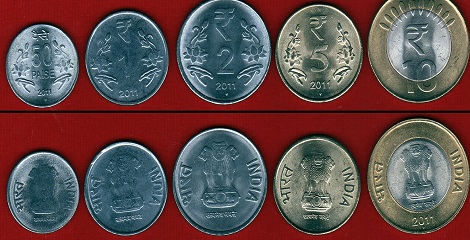Displaying the history of Indian coinage, Finance Minister Arun Jaitley initiated an exhibition on “coin and currency of India” in the Great Hall of North Block, New Delhi.
- The exhibition was organised by the Department of Expenditure, Ministry of Finance.
- This exhibition showcased the how money has changed in appearance and substance and evolved from barter to coins to the present day bank notes and e-money.
 Other events at exhibition
Other events at exhibition
Book titled “Sentinels of Raisina Hill” authored by Mohan Joseph (Controller General of Accounts) and Dhirendra Singh (former Home Secretary) and other book dubbed “Indian Paper Money” penned by Shri Razack presented a copy each of their respective books to the Finance Minister.
Here are some Interesting and Important facts regarding Indian currency
- There cannot be banknotes in denominations higher than ten thousand rupees.
- Coins can be issued up to the denomination of Rs 1000 in terms of Coinage Act, 2011.
- The highest denomination note ever printed by RBI was the Rs 10000 note in 1938 and 1954. These notes were demonetized in 1946 and again in 1978 respectively.
- Currency paper is composed of cotton and cotton rag.
- Notes are printed at four printing presses located at Nashik (Maharashta), Dewas (Madhya Pradesh), Mysore (Karnataka) and Salboni (West Bengal).
- Coins are minted at the four mints at Mumbai, Noida, Kolkata and Hyderabad.
- Security Paper Mill that produces papers for banknotes and non–judicial stamps is situated at Hoshangabad, Madhya Pradesh.
- The amount of a banknote is written on it in 17 official languages of India.
- Soiled banknote: Become dirty due to usage and also includes a two piece note pasted together wherein both the pieces presented belong to the same note and form the entire note.
- Mutilated banknote – A portion is missing or which is composed of more than two pieces.
- Imperfect banknote – means any banknote, which is wholly or partially, obliterated, shrunk, washed, altered or indecipherable but does not include a mutilated banknote.
AffairsCloud Recommends Oliveboard Mock Test
AffairsCloud Ebook - Support Us to Grow
Govt Jobs by Category
Bank Jobs Notification

